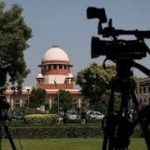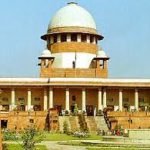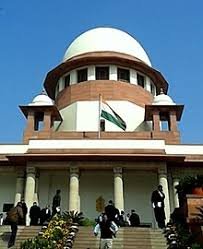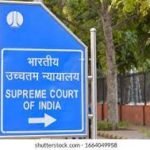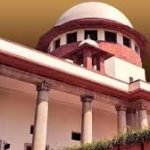The appellants, claiming ownership of a “Patta Land” since 1970, challenged the government’s resumption of their land for public purpose without compensation, arguing it was a “government assigned land” with non-alienable rights. The source outlines the factual averments of both parties, the Trial Court’s decision in favour of the appellants, which was overturned by the High Court, and proceeds to analyse relevant land acts, oral evidence, and legal precedents concerning land ownership, possession, and the government’s right to resume assigned lands. The document also examines the constitutional implications of the “no compensation” clause in land assignments, emphasizing the right to property and livelihood, and the burden of proof in title suits against the government.
(A) Constitution of India, Article 300A – Civil Procedure Code, 1908, Order 21 Rule 94 – Andhra Pradesh (Record of Rights in Land and Pattadar Pass Books) Act, 1971, Section 6 – Andhra Pradesh Board of Revenue Standing Orders, Board Standing Order No. 15 – Andhra Pradesh Assigned Lands (Prohibition of Transfers) Act, 1977, Section 3 read with Section 2(1) – Resumption of land by State – Challenge as to – Compensation – P.W.I in her examination-in-chief gave more than a fair idea as to how her father-in-law, Y. Rosanna acquired the subject land by way of a registered sale deed. She has deposed that the Government had issued Pattadar Passbook in favour of her father-in-law – Ex. A3 is the passbook that she produced before the Trial Court – Ex. A4 to Ex. A6 are the land revenue receipts produced in evidence – She has deposed that about fifteen years back her father-in-law passed away and her husband succeeded the subject land – Two years before the date of deposition, her husband also passed away – However, she along with her children remained in peaceful possession of the subject land – She has categorically deposed that the Subject Land is not an assigned land – In her cross examination, she deposed that she had no idea if the government had assigned the Subject Land to ‘H’ and that she was also unaware of the conditions mentioned in the alleged “D” Form Parte assigned to ‘H’ – DW1-Mandal Revenue Officer in his cross examination, he has stated that the State has the record to show the year in which the Government assigned the land to ‘H’ – However, the fact remains that no such record was produced – He has admitted that he does not have the “D” Form Patta said to have been issued in favour of ‘H’ and had no idea of the terms and conditions on which the land was assigned to ‘H’ – He admitted that Ex. A3 Patta Passbook was issued by the revenue department in favour of the first plaintiffs’ father, i.e., the father-in-law of PW1 – He admits that Ex. A4 to Ex. A6 are the land revenue receipts issued by the revenue department in favour of the appellants – He admitted that if a government land is assigned to any person, the same assumes the character of being a Patta Land – He has said that he had no idea whether any notice was issued to the occupiers of the suit land prior to its resumption – He has admitted that no inquiry under Section 3 of the Act of 1977 was undertaken for the purpose of ascertaining whether the assignee had violated the conditions laid in the “D” Form Patta – Held that the appellants could be said to have established their possession over the suit land in question right from the year 1970 – There is cogent and convincing evidence in this regard – They were in peaceful enjoyment of the suit land in question – Respondent State has not been able to prove its title to the suit land – Just because the suit land is surrounded by few other parcels of land owned by the Government, that by itself will not make the suit land of the ownership of the Government – If the Government claims title over the land, it has to establish it by producing relevant records in the form of revenue records etc. – State has failed to advance any credible evidence on record to rebut the presumption – Consequently, the appellants have Pattadars’ title to the suit land in question – The construction stood completed almost thirty years back. It would be too much for this Court to ask the State Authorities to demolish that part of the construction made over the suit land – Having regard to the nature of the land, the area of the suit land which is approximately three acres and the time spent pursuing this litigation for the past thirty years, the State should pay an amount of Rs. 70 lakhs towards compensation to the appellants.
(Para 61 to 65, 85, 114 and 127)
(B) Words and phrases – Who is a Pattadar – Held that a “Pattadar” is essentially a landowner who holds a land deed (Patta) directly from the government and is registered in the land revenue accounts as the holder or occupant of the land, liable to pay land revenue.
(Para 38)
(C) Andhra Pradesh Assigned Lands (Prohibition of Transfers) Act, 1977 – Assigned Lands – Land Patta Holder and a Land Allottee – Differences between a Land Patta Holder and a Land Allottee – Held that a Land Patta Holder possesses rights that are often permanent, heritable, and transferrable, as established under various land revenue regulations – However, a Land Allottee, may not have the same level of rights – Allotment can be conditional and may not confer full ownership rights. For example, the conditions of allotment may restrict transferability or impose specific usage requirement – As far as their legal standing is concerned, the Patta Holder is recognized as having a legal claim to the land, which can be defended in court – The Patta serves as evidence of ownership or entitlement – A Land Allottee, on the other hand, may have limited rights, especially if the allotment was made under specific government schemes or conditions that restrict ownership rights – For instance, the Act of 1977, imposes restrictions on the transfer of assigned lands – While Land Patta Holders generally have the right to transfer their interests in the land, subject to any conditions specified in the patta, the allottees may face restrictions on transferring their rights, particularly within a specified period or without government permission.
(Para 41 and 42)
(D) Bhartiya Sakshya Adhiniyam, 2023, Section 113 – Evidence Act, 1872, Section 110 – Evidence – Prima facie proof of ownership – Section 113 of Adhiniyam, 2023 embodies the well-recognised principle that possession is prima facie proof of ownership – A person in possession is entitled to remain in possession until another person can disclose a better title under Section 113 of the BSA – Therefore, once the plaintiff proves that he has been in possession of the suit property, the burden of proving that the plaintiff is not the owner is on the defendant who affirms that the plaintiff is not the owner – The Section does not make a distinction between the Government and a private citizen – Section 113 is, therefore, equally applicable where a Government claims to be the owner or challenges the ownership of the plaintiff who is in possession of the property – What Section 113 of the BSA does is to raise a statutory presumption in favour of a person who is in possession that he is the owner and places a burden upon the other persons who say that the plaintiff is not the owner – It is not disputed that before the possession of the Subject Land was taken over, the plaintiffs were in possession of the property for more than twenty years – The onus, therefore, under section 113 of the BSA was on the State to prove that the Government had a subsisting title to the Subject Land.
(Para 72, 74)
(E) Bhartiya Sakshya Adhiniyam, 2023, Section 113 – Evidence Act, 1872, Section 110 – The maxim “possession follows title” – Presumption – The principle enshrined in Section 110 of the Evidence Act (now Section 113 of the BSA) is based on public policy with the object of preventing persons from committing breach of peace by taking law into their own hands, however good their title over the land in question may be – It is for this purpose that the provisions of Section 6 of the Specific Relief Act, 1963, Section 145 of the Code of Criminal Procedure, 1973, and Sections 154 and 158 of the India Penal Code, 1860, were enacted – All the aforesaid provisions have the same objective – The said presumption is read under Section 114 of the Evidence Act and applies only in a case where there is either no proof, or very little proof of ownership on either side – The maxim “possession follows title” is applicable in cases where proof of actual possession cannot reasonably be expected, for instance, in the case of wastelands, or where nothing is known about possession one way or another – Presumption of title as a result of possession can arise only where facts disclose that no title vests in any party and the possession of the plaintiff is not prima facie wrongful – It certainly does not mean that because a man has title over some land, he is necessarily in possession of it – It, in fact, means, that if at any time a man with title was in possession of the said property, the law allows the presumption that such possession was in continuation of the title vested in him – A person must establish that he has continued possession of the suit property, while the other side claiming title, must make out a case of trespass/encroachment, etc. – Where the apparent title is with the plaintiffs, it is incumbent upon the defendant, that in order to displace this claim of apparent title and to establish beneficial title in himself, he must establish by way of satisfactory evidence, circumstances that favour his version – Even a revenue record is not a document of title – It merely raises a presumption in regard to possession – Presumption of possession and/or continuity thereof, both forward and backward, can also be raised under Section 110 of the Evidence Act.
(Para 83)
(F) Specific Relief Act, 1963, Section 34 – Suit for declaration – Title suit against the Government – How is the Court expected to consider title suits against the Government – Following principles must govern the adjudication of declaratory title suits against the Government:
- Suits for declaration of title against the government differ from suits against private parties on two counts:
- First, there is a presumption in favour of the Government in such suits, as all lands which are unoccupied or not vested in any individual or local authority, are presumed to belong exclusively to the Government.
- Secondly, there is an additional burden of proof on the party seeking declaration of title against the Government. The plaintiff has to establish its possession over the land in question for a period of thirty years as opposed to twelve years in the case of adverse possession against a private party.
- A decree declaring title against the Government must not be passed casually. Before granting any such decree, the trial court must ensure that the plaintiff has furnished adequate documentary evidence, either through title deeds tracing ownership for over thirty years or by establishing adverse possession for a period of thirty years,
iii. The trial court must verify whether the name of the plaintiff has been recorded as the owner, holder, or occupant in the relevant revenue or municipal records for more than thirty years.
- Finally, the trial court must carefully scrutinize the nature of the possession as may be asserted, determining whether the same is authorized or unauthorized, permissive or casual, furtive or clandestine, as well as open, continuous, and hostile, or implied by title, to ensure that public property is not inadvertently converted into private ownership by unscrupulous elements.
(Para 88)
(G) Suit for recovery of possession base on title – Burden of proof – Onus of proof – Held that in a suit for recovery of possession based on title, it is for the plaintiff to prove his title and satisfy the court that he, in law, is entitled to dispossess the defendant from his possession over the suit property and for the possession to be restored to him – However, there is an essential distinction between burden of proof and onus of proof – Burden of proof lies upon a person who has to prove the fact and which never shifts – Onus of proof shifts – Such a shifting of onus is a continuous process in the evaluation of evidence – In a suit for possession based on title once the plaintiff has been able to create a high degree of probability so as to shift the onus on the defendant, it is for the defendant to discharge his onus and in the absence thereof, the burden of proof lying on the plaintiff shall be held to have been discharged so as to amount to proof of the plaintiffs title.
(Para 92)
(H) Civil Procedure Code, 1908, Section 79, 80; Order XXVII – Civil Procedure – Notice under Section 80 – Sections 79, 80 and Order XXVII respectively of the CPC deal with the procedure where the suits are brought by or against the Government or Public officers acting in an official capacity – Section 79 is a procedural provision and contains provisions in relation to the suits by or against the Government – Section 80 of the CPC deals with the provisions relating to notice which is a condition precedent before filing a suit against the government or against a public servant – Order XXVII deals with the Suits by or against the government or public officers in their official capacity – Primary objective behind Section 80 of the CPC is to provide the Government or a public officer with an opportunity to assess the legal merits of a claim and potentially settle it if it appears to be just and reasonable – Unlike private parties, the Government is expected to objectively and impartially evaluate the matter, seek appropriate legal advice, and make decisions in public interest within the two-month period mandated by the section – This serves to save both time and taxpayer’s money by preventing needless litigation – The legislative intent is to ensure that public funds are not squandered on unnecessary legal battles – The provision of the notice is intended to prompt the Government or public officer to engage in negotiations for a fair settlement or, at the very least, to explain to the potential plaintiff why their claim is being contested.
(Para 93 to 99)
(I) Civil Procedure Code, 1908, Section 80 – Civil Procedure – Essentials of Section 80 CPC – A notice issued under Section 80 must include:
- The name, description, and place of residence of the person providing the notice.
- A statement outlining the cause of action, iii. The relief sought by the plaintiff.
When determining whether the essential requirements of the Section have been met, the court should consider the following questions:
(i) Has the notice provided adequate information to allow the authorities to identify the person issuing the notice?
(ii) Have the cause of action and the relief sought by the plaintiff been sufficiently detailed?
(iii) Has the written notice been delivered to or left at the office of the appropriate authority as specified in the section?
(iv) Has the suit been initiated after the expiration of two months following the delivery or submission of the notice, and does the plaint include a statement confirming that such notice has been provided as required?
(Para 103 and 104)
(J) Civil Procedure Code, 1908, Section 80 – Civil – Notice under Section 80 – A statutory notice holds significance beyond mere formality – Its purpose is to provide the Government or a public officer with an opportunity to reconsider the matter in light of established legal principles and make a decision in accordance with the law – However, in practice, such notices have often become empty formalities – The administration frequently remains unresponsive and fails to even inform the aggrieved party why their claim has been rejected – The purpose of law is the advancement of justice – The least that was required in the present case was for the State Authorities to acknowledge the notice issued by the appellants herein and inform them as regards their stance – Public Authorities must take statutory notice issued to them in all seriousness – The Public Authorities must not sit over such notices and force the citizens to the vagaries of litigation – They are expected to let the plaintiff know their stand within the statutory period or in any case before he embarks upon the litigation – In certain cases, courts may be obliged to draw adverse presumption against the Public Authorities for not acknowledging the notice or telling the plaintiff of its stand and in the absence of that, a stand taken during the course of trial may be considered as an afterthought – This is exactly what has happened in the present case – Registry is directed to circulate one copy each of this judgment to all the High Courts across the country and one copy each to all the Chief Secretaries of the respective State Governments with more emphasis on the chapter of Section 80 CPC as discussed by this Court in the judgment.
(Para 105, 106, 108, 113 and 129)
Yerikala Sunkalamma & Anr. V. State Of Andhra Pradesh Department Of Revenue & Ors.
Supreme Court: 2025 INSC 383: (DoJ 24-03-2025)

